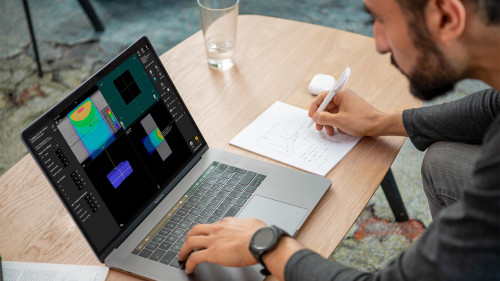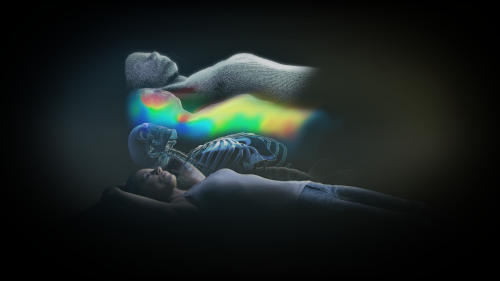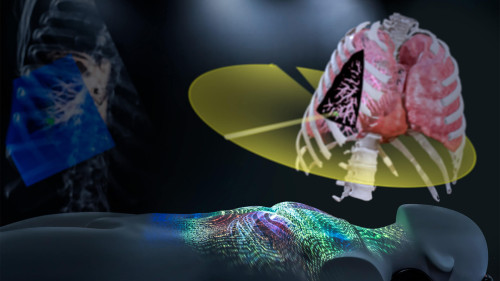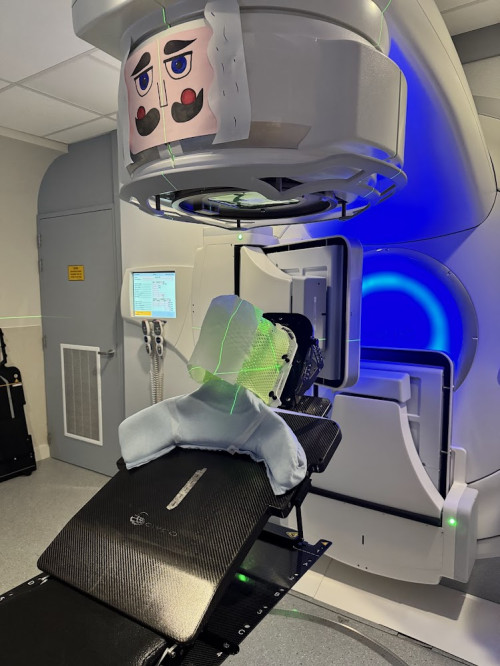Brainlab Novalis Circle will host a webinar, "Commissioning and clinical Implementation – From distortion correction and small field dosimetry to breath-hold treatments" on December 17th at 8:00 AM Pacific Time (5:00 PM Central European Time).
We are honored to welcome the following speakers as they present their latest insights and experiences:
🎙️ Thierry Gevaert, PhD, UZ Brussel, Belgium: Distortion correction commissioning
🎙️ Lauren X. Weinstein, MSc, Kaiser Permanente Cancer Treatment Center, South San Francisco, CA, United States: How small is too small?
🎙️ Garrett C. Baltz, MS, Scripps Cancer Center, San Diego, CA, United States: Commissioning ExacTrac Dynamic for breath-hold treatments
Participation is only possible for Novalis Circle Members. If you are not yet a member, please click here.
Big News! 🎉 We are excited to announce that the Brainlab Novalis Circle 10th International Conference is happening on September 17-19, 2026, in the vibrant city of Munich, Germany!
Mark your calendars and get ready for two full days of cutting-edge scientific talks and thought-provoking discussions, featuring some of the most brilliant minds in the world of stereotactic radiosurgery and stereotactic body radiation therapy.
It’s going to be an unforgettable event, and we can’t wait to see you there!
You can find more information here: Novalis Circle Conference 2026 | Brainlab
The Brainlab Academy is pleased to host the Advanced Clinical Course “ExacTrac Dynamic for Breast Cancer” in cooperation with the Universitair Ziekenhuis Brussel and the clinical team of Thierry Gevaert, PhD.
This course is a comprehensive training program aimed at supporting the use of ExacTrac Dynamic for breast cancer treatments. Attendees will learn about specific imaging, CT simulation, breath-hold techniques, and general strategies for treating breast cancer and will familiarize themselves with using the ExacTrac Dynamic Breath-Hold modules.
More information here.
Interested? Contact your local Brainlab Sales representative.
*Please note: A Brainlab Academy ticket is needed to be able to attend this course.
The Brainlab Academy is pleased to host the "Clinical Fundamentals of ExacTrac Dynamic" course in cooperation with Klinikum der Universität München LMU.
This course is a comprehensive training program designed to demonstrate the versatility of ExacTrac Dynamic for different indications. During the course, you will learn general positioning and monitoring strategies for cranial and extracranial indications. The course will also cover dedicated breath-hold techniques and implanted marker tracking. During the hands-on session, you will receive tips and tricks from experienced Brainlab trainers and clinical users. More information here.
Interested? Contact your local Brainlab Sales representative.
*Please note: A Brainlab Academy ticket is needed to be able to attend this course.
Exciting News!
Join us in Nashville, Tennessee for the Brainlab Regional Symposium happening November 14 and 15, 2025!
This 2 day symposium will bring together clinicians, physicists, and innovators from across the region to explore the latest breakthroughs in radiation oncology, featuring Brainlab’s cutting-edge SRS and SBRT solutions. From cranial SRS to extracranial treatments like DIBH breast, prostate, and lung applications — there's something for every aspect of clinical practice.
Agenda is coming soon
Click here to register
Looking forward to seeing you there!
Join us in Warsaw on June 24th, 2025, for the Brainlab Central Europe SRS & SBRT Symposium 2025. Experience an inspiring lineup of expert talks and engaging discussions on cutting-edge developments in radiotherapy and radiosurgery.
Highlights of the symposium:
- Discover advancements: Attend scientific talks and explore the latest techniques in precision, personalization, and standardization of SRS & SBRT.
- Join interactive sessions: Take part in live demonstrations and dynamic discussions that will shape the future of patient care.
- Network with experts: Engage with leading professionals in the field and connect with peers from across Central Europe.
We look forward to welcoming you to Warsaw this June! Click here to learn more: Welcome | Brainlab
We’re pleased to host the Advanced Clinical Course "Brain Metastases and Skull-base Tumors" in cooperation with Universitätsklinikum Hamburg-Eppendorf and the clinical team of Prof. Dr. med. Cordula Petersen and Dipl.-Phys. Manuel Todorovic.
This course will provide participants with the opportunity to learn from clinical experts about the clinical implementation and requirements for a successful radiosurgery program for brain metastases and skull-base tumors. During the course, medical physicists will learn about specific quality assurance techniques as well as expert tricks for treatment planning with Brainlab radiosurgery software. Radiation oncologists and neurosurgeons will learn about contouring, clinical prescriptions and planning approaches.
More information here.
Interested? Contact your local Brainlab Sales representative.
*Please note: A Brainlab Academy ticket is needed to be able to attend this course.
We’re pleased to host the Advanced Clinical Course “ExacTrac Dynamic for Breast Cancer” in cooperation with the Universitair Ziekenhuis Brussel and the clinical team of Prof. Mark De Ridder and Thierry Gevaert, PhD.
This course is a comprehensive training program aimed at supporting the use of ExacTrac Dynamic for breast cancer treatments. Attendees will learn about specific imaging, CT simulation, breath-hold techniques, and general strategies for treating breast cancer and will familiarize themselves with using the ExacTrac Dynamic Breath-Hold modules.
More information here.
Interested? Contact your local Brainlab Sales representative.
*Please note: A Brainlab Academy ticket is needed to be able to attend this course.
We’re pleased to host the Brainlab Academy: Essential Course Radiosurgery in Chicago.
This course is a three-day classroom training designed for clinicians pursuing full proficiency with Brainlab radiosurgery treatment planning systems. The session is hosted at the state-of-the-art training center in the Wrigley building.
Please find more information here: Essential Course Radiosurgery | Brainlab
Interested? Contact your local Brainlab Sales representative.
*Please note: This course is for US-customers only. A Brainlab Academy ticket is needed to be able to attend this course.
Auckland Radiation Oncology in New Zealand has successfully utilized ExacTrac Dynamic (ETD) to treat a patient who otherwise would not have been eligible for radiation therapy. Due to breathing difficulties, the patient was unable to lie flat, making CBCT and other imaging techniques unfeasible.
Thanks to the advanced surface and X-ray positioning and monitoring capabilities of ETD, the patient was treated with precision and ease, showcasing the technology's ability to overcome complex clinical challenges!
We’re pleased to host the Advanced Clinical Course "Brain Metastases and Skull-base Tumors" in cooperation with Universitätsklinikum Hamburg-Eppendorf and the clinical team of Prof. Dr. med. Cordula Petersen and Dipl.-Phys. Manuel Todorovic.
This course will provide participants with the opportunity to learn from clinical experts about the clinical implementation and requirements for a successful radiosurgery program for brain metastases and skull-base tumors. During the course, medical physicists will learn about specific quality assurance techniques as well as expert tricks for treatment planning with Brainlab radiosurgery software. Radiation oncologists and neurosurgeons will learn about contouring, clinical prescriptions and planning approaches.
More information here.
Interested? Contact your local Brainlab Sales representative.
*Please note: A Brainlab Academy ticket is needed to be able to attend this course.












